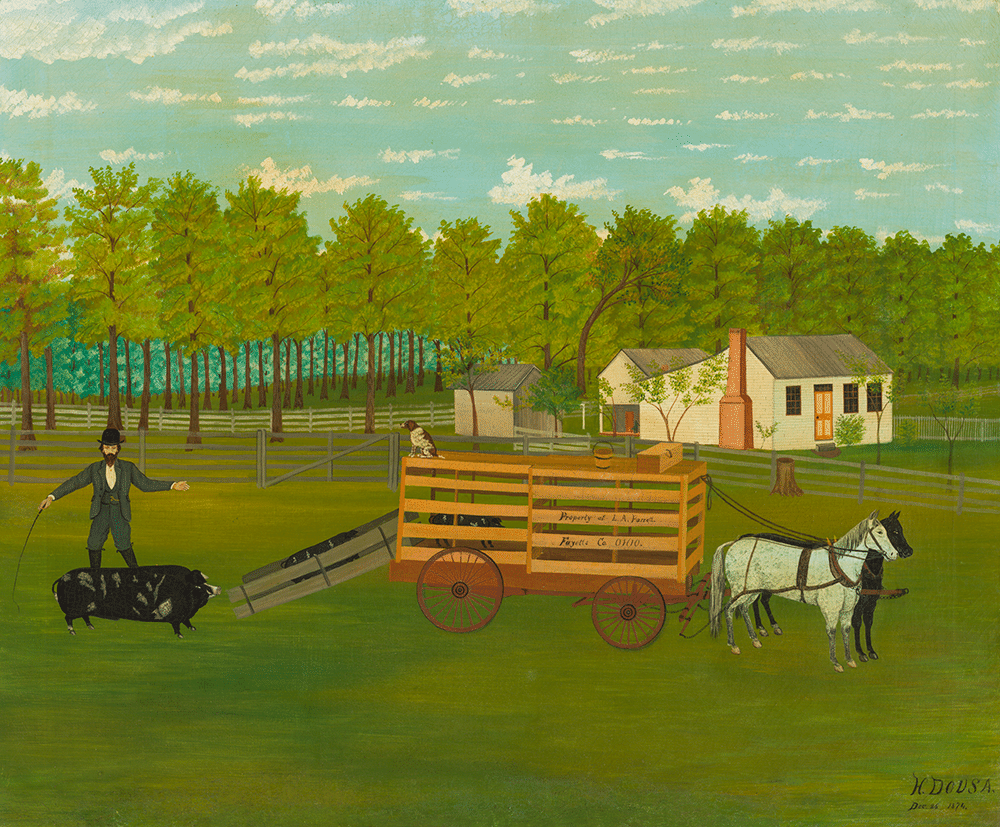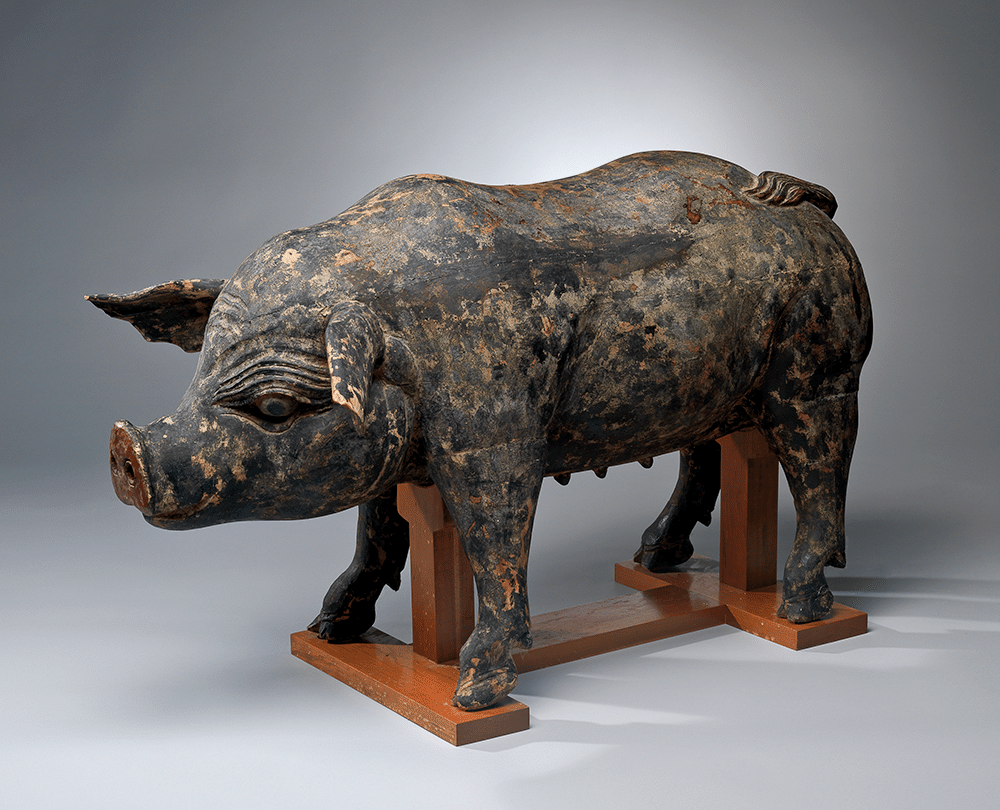- Art Home
- Exhibitions
-
Explore the Collection
- Explore the Collection Home
- African Art
- American Paintings, Sculpture and Drawings
- Contemporary
- Decorative Arts and Design
- East Asian Art
- European Paintings, Sculpture and Drawings
- Fashion Arts and Textiles
- Musical Instruments
- Indigenous American Art
- Photography
- Prints
- South Asian Art, Islamic Art and Antiquities
- Provenance and Cultural Property
- Conservation
- Meet the Curators
- Digital Resources
- Events & Programs Home
- Calendar
- Accessibility
- Adults
-
Families & Teens
- Families & Teens Home
- 10x10 Teen Art Expo
- Art on the Rise
- Art Together: Art Making for Families with Children Ages 3–5
- Baby Tours
- Boy Scouts / Girl Scouts
- CAM Kids Day
- Choose Your Own Gallery Adventure
- Family Storytime and Gallery Walk
- Family Studio: Art Making for Families with Children Ages 6–12
- REC Reads
- Rosenthal Education Center (REC)
- See Play Learn Kits
- Summer Camp
- Teachers
- Community Outreach
- Fundraisers
- Plan Your Own Event

- Art Home
- Exhibitions
-
Explore the Collection
- Explore the Collection Home
- African Art
- American Paintings, Sculpture and Drawings
- Contemporary
- Decorative Arts and Design
- East Asian Art
- European Paintings, Sculpture and Drawings
- Fashion Arts and Textiles
- Musical Instruments
- Indigenous American Art
- Photography
- Prints
- South Asian Art, Islamic Art and Antiquities
- Provenance and Cultural Property
- Conservation
- Meet the Curators
- Digital Resources
- Events & Programs Home
- Calendar
- Accessibility
- Adults
-
Families & Teens
- Families & Teens Home
- 10x10 Teen Art Expo
- Art on the Rise
- Art Together: Art Making for Families with Children Ages 3–5
- Baby Tours
- Boy Scouts / Girl Scouts
- CAM Kids Day
- Choose Your Own Gallery Adventure
- Family Storytime and Gallery Walk
- Family Studio: Art Making for Families with Children Ages 6–12
- REC Reads
- Rosenthal Education Center (REC)
- See Play Learn Kits
- Summer Camp
- Teachers
- Community Outreach
- Fundraisers
- Plan Your Own Event
Blog
Blog
- Home
- Plan Your Visit
-
Art
- Art Home
- Exhibitions
-
Explore the Collection
- Explore the Collection Home
- African Art
- American Paintings, Sculpture and Drawings
- Contemporary
- Decorative Arts and Design
- East Asian Art
- European Paintings, Sculpture and Drawings
- Fashion Arts and Textiles
- Musical Instruments
- Indigenous American Art
- Photography
- Prints
- South Asian Art, Islamic Art and Antiquities
- Provenance and Cultural Property
- Conservation
- Meet the Curators
- Digital Resources
-
Events & Programs
- Events & Programs Home
- Calendar
- Accessibility
- Adults
-
Families & Teens
- Families & Teens Home
- 10x10 Teen Art Expo
- Art on the Rise
- Art Together: Art Making for Families with Children Ages 3–5
- Baby Tours
- Boy Scouts / Girl Scouts
- CAM Kids Day
- Choose Your Own Gallery Adventure
- Family Storytime and Gallery Walk
- Family Studio: Art Making for Families with Children Ages 6–12
- REC Reads
- Rosenthal Education Center (REC)
- See Play Learn Kits
- Summer Camp
- Teachers
- Community Outreach
- Fundraisers
- Plan Your Own Event
- Give & Join
- About
- Tickets
- Calendar
- Exhibitions
- Blog
- Shop
Christmas Day 147 Years Ago
by Julie Aronson, Curator of American Paintings, Sculpture, and Drawings
12/24/2021
Christmas , The Property of L. A. Parrett , Henry Dousa , American Painting

Henry Dousa (American, b. Germany, 1837 or 1838–1906), The Property of L. A. Parrett, Fayette Co., Ohio, 1874, Gift of Larry A. Huston Family and Museum Purchase with funds provided by the Mr. and Mrs. Harry S. Leyman Endowment, the Ohio Folk Art Association, and the Decorative Arts Society of Cincinnati in memory of Jon Graeter, 2018.141
Although not a winter scene, the artist inscribed this painting in the lower righthand corner on Christmas Day of 1874. This is a rare work by Henry Dousa, known only for approximately a dozen signed pieces. Working sometimes in oil and other times in watercolor or pastel, Dousa depicted agricultural scenes in Ohio from about 1874 to 1879, on commission for the farmers whose names he noted on the front of the paintings. These pictures, of a type invented in rural England, vividly express the pride of breeders in their ever more grandiose and sturdier livestock, which they entered in competitions. L. A. Parrett, whose name appears on the cart in this example, was probably Lawson A. Parrett (1841–?), a stockholder and officer in the Poland China breed association. The Poland China, depicted here, was a breed of pig recognized by its black coat flecked with white spots. Prized for its dramatic size, quiet temperament, and strong bones ideally suited to withstand the rough journey to market, it was a celebrated breed developed in Warren and Butler Counties in Ohio in the first part of the nineteenth century. The man in the painting may be a portrait of Mr. Parrett himself driving his prized swine up the ramp into the horse-drawn wagon as his pup supervises the job. As the date was not only Christmas but also the eighth wedding anniversary of Lawson Parrett and his wife Jennie (née Campbell), the painting was perhaps a gift from one of them to the other.
Born in Germany in about 1837, Henry Dousa arrived in the United States in 1860. The details of his life remain sketchy. To trace his movements, we rely on the locales noted on his paintings along with information gleaned from city directories, census records, and newspapers. In the mid- to late-1870s, Dousa worked in rural communities around Washington Court House and Mechanicsburg, Ohio. We find him in Lafayette, Indiana, by 1885, working as “a portrait painter and scenic artist.” He painted watercolors of Lafayette subjects into 1893, but then the unmarried artist moved on once again. The Saint Louis Post-Dispatch of May 20, 1894, recounts an incident in which Dousa failed to deliver a painting of racehorses for which his client had already paid, including a two-dollar tip. When the client could not find the elusive artist, he lodged a complaint with the police, consequences unknown. Although two women violently assaulted Dousa on the streets of Saint Louis in a robbery in 1896, he appears to have remained in the city. The Federal Census of 1900 shows him residing in a saloonkeeper’s boarding house. He lived in Saint Louis until his death in 1906.
The Property of L. A. Parrett is one of Dousa’s most elaborate paintings. It reveals details of life in the rural Midwest that surely delighted his successful clientele and seem to take us back in time. Works like this have long enthralled modern artists for their unconventional approaches to artmaking and aesthetic qualities. Dousa reveled in patterns, for example: the repeated lines of narrow clouds, the stylized row of trees that extends across the canvas, the delicate white fence, and the straight rails of the wagon. Especially intriguing features are the way the artist positioned the black horse behind the white one so that it appears like a shadow, and the way the man seems to step on the pig rather than stand behind it.
Dousa’s painting of the Parrett farm represents the nineteenth-century taste for agricultural subjects at the time when American life was evolving from an agrarian economy to one dominated by industry. The painting makes a wonderful accompaniment to the museum’s wooden butcher shop sign in the form of a carved and painted pig with loads of personality. These and other evocative examples of American Folk Art are on view in Gallery 219.
Happy Holidays!

Butcher Shop Sign: Pig, 19th century, American (possibly Pennsylvania or Ohio), wood and paint, Gift of Jim and Sheri Swinehart, 2011.68
Cincinnati, OH 45202
Toll Free: 1 (877) 472-4226
Museum Hours
Museum Shop
Terrace Café
Library
The Cincinnati Art Museum is supported by the generosity of tens of thousands of contributors to the ArtsWave Community Campaign, the region's primary source for arts funding.

Free general admission to the Cincinnati Art Museum is made possible by a gift from the Rosenthal Family Foundation. Exhibition pricing may vary. Parking at the Cincinnati Art Museum is free.
Generous support for our extended Thursday hours is provided by Art Bridges Foundation’s Access for All program.

General operating support provided by:



